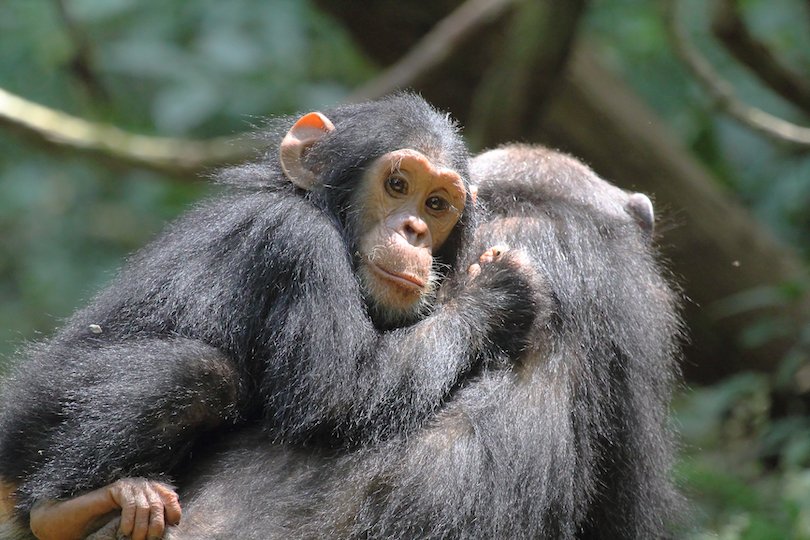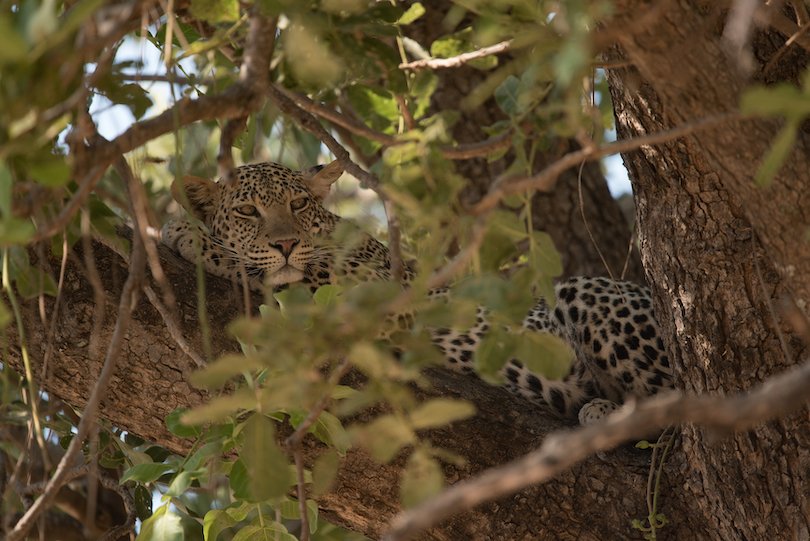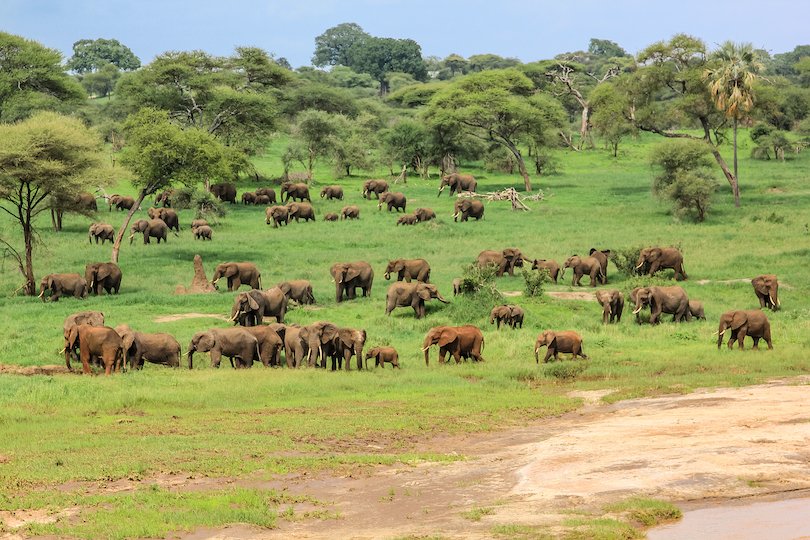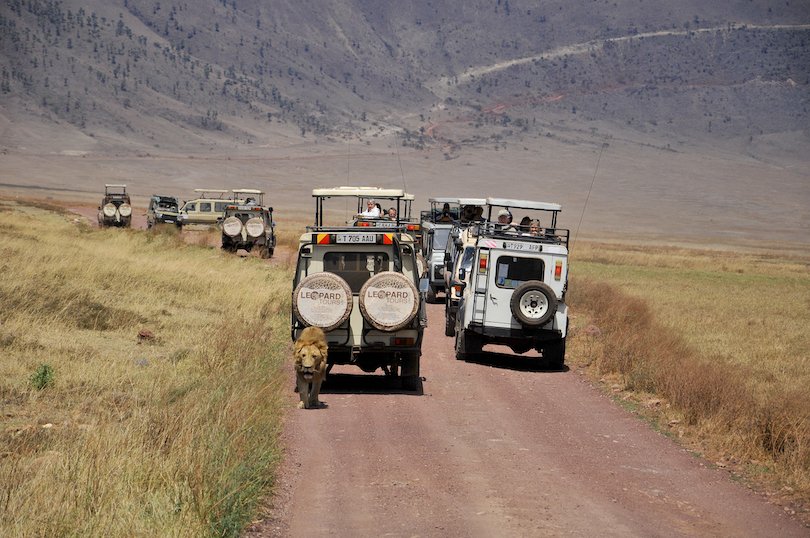18 Best Things to Do in Tanzania, which is situated in East Africa and bordered by Kenya and Zambia, is renowned as one of the most extraordinary safari destinations worldwide. It boasts diverse landscapes and abundant wildlife, making it a paradise for nature enthusiasts. With its vast territory, Tanzania is the largest country in East Africa and is home to over 120 ethnic groups.
In close proximity to the Serengeti National Park reside the Massai people, a semi-nomadic tribe known for their intricate clothing designs and adherence to age-old customs and traditions.
Tanzania is famous for its array of tourist best attractions, including Mount Kilimanjaro, the tallest mountain in Africa, and the Great Migration, which is the largest movement of mammals in the world.
Embarking on grand safaris allows visitors to witness majestic creatures such as lions, elephants, giraffes, and hippos up close and personal. Exploring the numerous national parks through exhilarating hikes is among the most enjoyable activities in Tanzania, offering glimpses of endemic and endangered species.
A journey to Tanzania promises an unparalleled and unforgettable experience that will leave a lasting impression.
Arusha Cultural Heritage Centre

The city of Arusha, located in the Great Rift Valley, is widely recognized as the safari capital. Within this bustling metropolis lies the Arusha Cultural Heritage Centre, which is renowned for its impressive collection of artifacts and unique architecture. The centre is the first of its kind in Africa, and one of its buildings is designed to resemble the Uhuru Peak of Kilimanjaro.
The Arusha Cultural Heritage Centre boasts expansive exhibits that showcase a variety of items, including Verdite carvings, renowned African sculptures, antiques, cultural masks, and the rare gemstone, Tanzanite. One of the sections in the centre is dedicated to art specialized by the Makonde tribe, who are known for their distinguished wood pieces carved from ebony.
Visitors to the Arusha Cultural Heritage Centre can also explore the nearby Soko Mujinja market, which is famous for its fresh local goods and produce. It’s the perfect stop for those looking to take home a piece of Arusha’s vibrant culture.
Mikumi National Park

Mikumi National Park, the fourth largest national park in Tanzania, is well-known for its abundant population of Eland and African Wild Dogs. Situated near Morogoro, this park serves as a popular tourist destination, connecting the bustling city of Dar es Salaam to the renowned town of Iringa. Iringa is famous for its Neema Crafts Centre, which has received numerous awards, as well as its exquisite woven baskets.
At the heart of Mikumi National Park lies the magnificent Mkata Floodplain, offering breathtaking vistas and a diverse range of wildlife species such as zebras and giraffes. The waterholes in this area are frequently visited by hippos, water buffalo herds, and elephants seeking respite and refreshment.
Although Mikumi National Park may not be home to rhinos, it remains one of the finest safari locations in the country.
Gombe Stream National Park

Gombe Stream National Park, located less than an hour away from Kigoma, the capital of the Kigoma region, is a small national park that is equally as popular as its larger counterparts. This park is famous for being the site where Jane Goodall conducted her groundbreaking research on chimpanzees and other primates. As a result, the park’s main draw is undoubtedly its rich history and association with Goodall’s renowned work.
Gombe Stream National Park is renowned for its abundant primate population, making it one of the top destinations in Africa. Visitors from all over the globe are drawn to the park to witness the remarkable variety of primates, such as chimpanzees, vervet monkeys, red-tailed monkeys, blue monkeys, and olive baboons.
Embarking on a safari adventure allows you to witness these magnificent creatures up close, observing their fascinating communication and witnessing their agile movements as they swing effortlessly through the trees.
Stone Town is one of the 18 Best Attractions and Things to Do in Tanzania

The island of Zanzibar is home to the historic Stone Town, which is famously known as the “Spice Island” due to its thriving spice farming industry that greatly contributes to the island’s economy.
Stone Town serves as a remarkable testament to the ancient city’s rich historical heritage, spanning over a thousand years. The architectural and design elements of Stone Town have been influenced by various cultures, including Persian, Arabian, and European.
However, traces of more contemporary influences can also be observed in Stone Town, as it underwent a significant transformation when the Sultan of Oman relocated to Zanzibar during the 19th century.
Embark on a leisurely stroll through Stone Town (rest assured, the town is not excessively large!) to admire its extraordinary designs, such as the intricately carved Zanzibari doors made of wood. Afterwards, make sure to visit the Palace Museum, an imposing white palace that once served as the sultan’s residence during the 19th century, located along Stone Town’s waterfront.
Walking along the cobblestone streets is an unparalleled experience that becomes even more fulfilling when you make your way to the harbor. There, you can witness the constant ebb and flow of various ships, both small and large, creating a truly remarkable sight.
Arusha National Park

Arusha National Park is renowned for its vast expanse that encompasses a volcano and the second-highest peak in the country, Mount Meru. It is particularly famous for housing the largest population of giraffes in the world.
What sets Arusha National Park apart from other national parks in the northern circuit is its diverse range of ecosystems, including alpine, savannah, and rainforest. These ecosystems support a wide variety of wildlife species that cannot be found in other parks. Visitors to Arusha National Park can expect to witness remarkable sightings of African fish eagles, white colobus monkeys, leopards, red duikers, bushbucks, and blue monkeys.
The park is a magnet for mountaineers and hikers seeking an exhilarating challenge. Scaling the summit of Mount Meru, which typically takes around three to four days via the Momella route, is a popular endeavor. For those who prefer a water-based adventure, canoeing on the park’s numerous lakes, both large and small, offers a thrilling opportunity to observe wildlife in their natural habitat.
Ruaha National Park

To the west of Iringa lies Ruaha National Park, which was once the largest national park in Tanzania. However, it has now been surpassed by Nyerere National Park in terms of size. Despite this, Ruaha National Park remains a popular destination due to its lower number of tourists, allowing for a more enjoyable and fulfilling wildlife experience.
One of the main draws of the park is its impressive lion population, which accounts for 10% of the world’s total. Additionally, it is home to the largest population of elephants in East Africa, as well as rare antelope species like Lichtenstein’s hartebeest and sable antelope. Visitors can also expect to see a variety of other animals, including black-backed jackals, cheetahs, and bat-eared foxes.
In addition to game viewing, Ruaha National Park offers cultural tours that provide a unique opportunity to learn about the local Hehe people and their traditions. Visitors can witness traditional crafts and farming practices, and gain insight into the history and stories of this fascinating culture.
Selous Game Reserve

Nyerere National Park, formerly known as the Selous Game Reserve, is now Tanzania’s largest national park and one of the world’s largest wildlife sanctuaries. The reserve can be accessed by plane from Dar es Salaam, a 6-7 hour drive, or a 4-5 hour train ride on the TAZARA (Tanzania Zambia Railway), which offers breathtaking views of Tanzania’s thriving wilderness.
The park boasts a diverse range of wildlife species, including lions and cheetahs, making it a prime location for visitors to witness these majestic creatures in their natural habitat. Other big game animals such as rhinos, elephants, wildebeests, and Elands can also be spotted throughout the park.
Visitors can choose from a variety of safari options, including boat, game, hot air balloon, and walking safaris. For those seeking a more personal and exhilarating experience, the walking safari through the Selous Game Reserve is a must-try.
Take a guided nature hike to fully appreciate the beauty of Nyerere National Park, and then immerse yourself in the local culture with a traditional visit to a nomadic village.
Pemba Island

Pemba Island is renowned for its role as a major producer of cloves, contributing over 70% of the world’s supply. However, the island has much more to offer than just its agricultural prowess.
With its picturesque beaches and unspoiled natural landscapes, Pemba Island is a hidden gem that provides a peaceful escape from the hustle and bustle of more popular tourist destinations. The island’s crystal-clear waters and thriving marine ecosystems make it a prime location for diving and swimming, with a diverse range of marine life including clownfish, sea anemones, barracuda, marlins, sharks, whales, and dolphins. Sunset cruises are also a popular activity, providing a unique opportunity to witness these magnificent creatures from above the surface.
Tarangire National Park

Tarangire National Park, located south of Lake Manyara in northern Tanzania, derives its name from the Tarangire River that meanders through the park, providing essential resources to the local ecosystem. For those seeking to avoid crowds and immerse themselves in the stunning landscapes and wildlife of Tanzania.
the park is an excellent option, just a short distance from Arusha. Embark on a walking safari through the park to marvel at the ancient baobabs, explore the ancient rock paintings near Kolo, and witness herds of elephants up close. Afterward, indulge in a luxurious safari retreat within the park, such as the Sanctuary Swala Camp, where you can bask in the majestic beauty of the flat savannah, surrounded by giant acacia trees and abundant wildlife sightings.
Mafia Island

Mafia Island, which is part of an archipelago with the same name, is renowned for its thriving marine ecosystem and is largely safeguarded by the Mafia Island Marine Park. This has led to the island being designated as Tanzania’s first marine park.
Mafia Island, a tropical haven, provides an ideal escape from the bustling tourist destinations in Tanzania. Its allure lies in its magnificent coral reefs, vibrant schools of tropical fish, and captivating marine creatures like sea turtles and whale sharks, making it a haven for diving enthusiasts.
Moreover, Mafia Island is renowned for its thrilling deep sea fishing experiences. Enthusiasts can relish in the excitement of catching prized species such as yellowfin tuna, kingfish, and great barracudas. Interestingly, in 1950, the esteemed author of the Sherlock Holmes novels, Sir Arthur Conan Doyle, graced Mafia Island with his presence and achieved the African record for the heaviest dorado caught, weighing an impressive 75 pounds.
Lake Manyara

Lake Manyara National Park, located near the town of Mto Wa Mbu, is renowned as Tanzania’s smallest national park. It serves as a vital sanctuary for elephants, safeguarding them from the constant threat of poaching. The park’s thriving ecosystem, sustained by Lake Manyara, supports a diverse range of wildlife including large herds of elephants, wildebeests, waterbucks, impalas, warthogs, zebras, and pink flamingos. With over 400 bird species frequenting the area, birdwatching has become a popular and widespread activity around Lake Manyara.
Lake Manyara is home to a unique sight – lions that climb trees. These particular lions have gained quite a reputation for their preference to relax and sleep in the branches of acacia and other trees, rather than on the ground like most other lions found in Africa.
Exploring Tanzania offers the opportunity to engage with the local Maasai people, which is an incredibly captivating experience. The Maasai people residing in the vast plains have been constructing their homestead huts for thousands of years. Dressed in vibrant red shuka and armed with spears, the Maasai warriors are a sight to behold. Make sure not to miss the chance to join a Maasai warrior for a run, savor a traditional meal of corn polenta, and witness the mesmerizing leaping dance performed by the Maasai and fellow tourists.
Zanzibar Beaches

Zanzibar Island is renowned not only for its historic Stone Town but also for its famous beaches. These beaches attract a large number of tourists every year.
One of the top beaches in Zanzibar is located on the south coast of the island. Kizimkazi Beach is highly regarded for its frequent sightings of bottlenose dolphins. It is also an ideal spot for diving, snorkeling, and swimming alongside other native marine species.
Kendwa Beach and Nungwi Beach are also popular choices in Zanzibar. Both beaches offer excellent settings for various water activities. Nungwi Beach provides a relaxing atmosphere, perfect for sunbathing and exploring the crystal-clear waters. On the other hand, Kendwa Beach has a livelier vibe with its bars and resorts scattered along the shoreline. One such resort is Bravo Kendwa Beach Resort, where you can fall asleep to the soothing sounds of the ocean.
Mount Kilimanjaro

Mount Kilimanjaro, the highest free-standing mountain in the world, is also a dormant volcano and the highest peak in Africa. Located near Moshi, Arusha, this majestic mountain attracts mountaineers from all corners of the globe. Its snow-covered summit stands tall in the sky, surrounded by grasslands at its base. Despite the challenge of hiking to the peak, people from all walks of life travel to Mount Kilimanjaro to take on this feat.
Whether you’re a hiker, nature lover, outdoor enthusiast, or mountaineer, Mount Kilimanjaro is a must-visit destination. As one of the Seven Summits, climbing this mountain is an unforgettable experience that offers a thrilling and rewarding sense of accomplishment upon reaching the summit. The youngest person to reach the summit was six years old, while the oldest was 89, proving that anyone can conquer this mountain.
Ngorongoro Crater

The Ngorongoro Crater, once a massive volcano, now stands as the largest intact caldera in the world. It is believed that this crater was even taller than Mount Kilimanjaro, the highest peak in Africa, before its eruption and subsequent collapse.
Situated near the town of Karatu, in the Eastern Great Rift Valley, this crater is estimated to be nearly three million years old. It has evolved into a thriving ecosystem, creating one of the most abundant wildlife habitats on Earth.
The towering walls of the Ngorongoro Crater reach heights surpassing many of the world’s tallest skyscrapers. Beyond these walls lies a vast expanse of flourishing forests, cascading waterfalls, and expansive marshlands.
Renowned as one of Tanzania’s most awe-inspiring attractions, the steep sides of the crater have become a natural enclosure for a diverse array of wild animals. It is currently one of the prime locations in Africa to spot the endangered Black Rhino.
At first glance, the Ngorongoro Crater may appear empty from above, but it teems with wildlife within its boundaries. Elephants, baboons, leopards, and various other local species find refuge in this remarkable place.
Serengeti National Park [SEE MAP]

The Serengeti National Park, located in the Mara region, is a natural wonder that boasts the iconic Serengeti, which has been featured in numerous documentaries. The park is home to millions of herbivores, including gazelles and zebras, who travel to the Serengeti during the annual Great Migration. Their predator counterparts follow along, making it a spectacle to witness.
The Serengeti ecosystem is one of the oldest on the planet, attracting visitors from all over the world to witness the impalas, elands, ostrich, and wildebeest flocking to the thriving plains.
While the best time of year to visit the Serengeti National Park to see the migration is debatable, the peak season tends to be during the dry season (from late June to October). During this time, the grass becomes dry and exhausted, and the wildebeest and zebra start to mass in huge armies, offering a spectacular wildlife show.
Katavi National Park

Katavi National Park, an extension of the Rift Valley, is renowned for its abundant herds of buffalo. In fact, it boasts one of the largest buffalo populations in the world.
Within this pristine and untouched wilderness, Katavi National Park offers more than just buffaloes. Its remote landscape is adorned with rivers teeming with hippos and crocodiles, lush forests, and vast grasslands. Visitors from around the globe flock to this park to immerse themselves in the awe-inspiring beauty of nature and to seek out the iconic tamarind tree.
According to local legends, the tamarind tree is believed to house the spirit of Katabi, a legendary huntsman. As a tribute to this great hunter, locals offer their reverence to the tree.
One of the most popular activities in Katavi National Park is game viewing, where visitors can witness the majesty of the world’s largest land animals. At Katavi Wildlife Camp, a unique accommodation seamlessly blending into the plains, guests can join the buffalo and lion as they roam the Katuma Plains. It is an unparalleled experience that cannot be replicated elsewhere!
Udzungwa Mountains National Park

Situated between the Morogoro and Iringa regions, Udzungwa Mountains National Park forms part of the Eastern Arc Mountains and boasts a rich variety of thriving ecosystems.
The park encompasses a miombo forest, a mountain forest, a tropical rainforest, a steppe, and grasslands, making it a haven for nature enthusiasts and those who enjoy outdoor activities. These diverse ecosystems are home to majestic waterfalls, towering mountain peaks, dense forests, and a wide array of plant and animal species.
Notably, Udzungwa Mountains National Park is renowned for harboring the largest population of rare monkey species, including the critically endangered Sanje-Crested Mangabey monkey.
For avid mountaineers, the park offers the exhilarating challenge of hiking the highest peaks of Mwanihana and Luhomero. Park guides also encourage visitors to bring their swimsuits to take a refreshing dip in the pools beneath the waterfalls. Additionally, guests can immerse themselves in the local culture by experiencing traditional dances, learning about native arming techniques, and indulging in bird watching to spot endemic species such as the Rufous Winged Sunbird and Udzungwa Forest Partridge.
Among the park’s most popular attractions is the Sonje Waterfalls. Travelers eagerly seek out the hike to these magnificent falls, which, although not as steep as some of the other waterfalls, can still pose a challenge due to its length. However, the opportunity to swim in the crystal-clear waters and marvel at the breathtaking beauty of the falls makes the journey truly worthwhile.
Lake Victoria is one of the 18 Best Things to Do in Tanzania

Lake Victoria, one of the African Great Lakes, holds the distinction of being the largest tropical lake in the world and the second-largest freshwater lake in terms of surface area.
Situated near Serengeti National Park, Lake Victoria spans across the borders of Kenya, Uganda, and Tanzania. Within this vast lake, there are numerous archipelagos scattered between these three countries. Among the notable attractions of Lake Victoria is the renowned Rubondo Island National Park.
Rubondo Island National Park, the largest island national park in Africa, offers a thriving habitat for various captivating creatures such as giraffes, elephants, and wild chimpanzees.
Due to these remarkable features, Rubondo Island National Park has gained popularity as a destination for activities like walking, canoeing, and embarking on jungle safaris.





